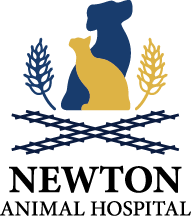Library
-
Aggression is the most serious and dangerous behavior problem that dog owners may need to face. Since there are many different types of aggression, making a diagnosis, determining the prognosis (the chances of safe and effective correction), and developing an appropriate treatment plan are usually best handled with the help of a veterinary or applied animal behaviorist.
-
There are multiple reasons that a dog may exhibit aggression toward family members. The most common causes include social conflict-related aggression, fear-based or defensive aggression, possessive aggression, food guarding aggression, and redirected aggression.
-
Even though dogs are a social species, some dogs exhibit aggression toward dogs outside their immediate social circle. There are many possible reasons for the behavior, and an accurate assessment is essential. A medical exam is important to check for underlying pain or illness. Treatment can be effective once the causes for the behavior have been determined.
-
Treatment for aggression toward unfamiliar dogs is available, and the outcome can be positive. An accurate medical and behavioral assessment is needed as treatment plans are designed based on the context and underlying motivation for the behavior. To start, management is used to prevent aggressive encounters. Behavior modification is always needed and may include desensitization, counterconditioning, and response substitution. Medication is sometimes used to lower anxiety and frustration.
-
Dogs that rush to the door, barking, can frighten visitors. An excited dog could rush out the door and be injured. Barking and rushing toward the door can be managed by teaching dogs an appropriate alternative behavior. Some dogs can become very aroused at the door and can exhibit aggressive behavior. Professional guidance may be needed.
-
Chasing moving objects such as cars and bicycles is very rewarding to dogs, yet can be dangerous. Early intervention can prevent the behavior from escalating. Behavior modification techniques, such as response substitution, desensitization and counterconditioning, are effective treatment strategies.
-
Eating feces, known as coprophagia, is common and can be normal behavior for a dog. The behavior may have originated to keep the den or sleeping area clean. For persistent or sudden-onset coprophagia, it is important to screen for medical and behavioral illnesses. It is helpful to supervise your dog so that you can clean any stool immediately.
-
Sometimes it is necessary to use a special type of collar to prevent your dog from licking a healing would or incision. Be sure that your dog is comfortable and that the protective gear fits properly. If your dog is not adjusting easily to the cone, talk with your veterinarian. Medication can be prescribed to reduce anxiety so that your dog can be safe and calm.
-
Many dogs routinely greet people by jumping up on them. Jumping up can cause a person to be frightened or even injured. All dogs can be trained to greet people in a calm manner. Training should focus on rewarding desired behavior while being careful not to inadvertently reward the undesirable jumping behavior.
-
There are numerous reasons that a dog might soil the house with urine and/or stools. Determining the specific reason is essential for developing a treatment program. Dogs that soil the home continuously or intermittently from the time they were first obtained may not have been properly house-trained.


